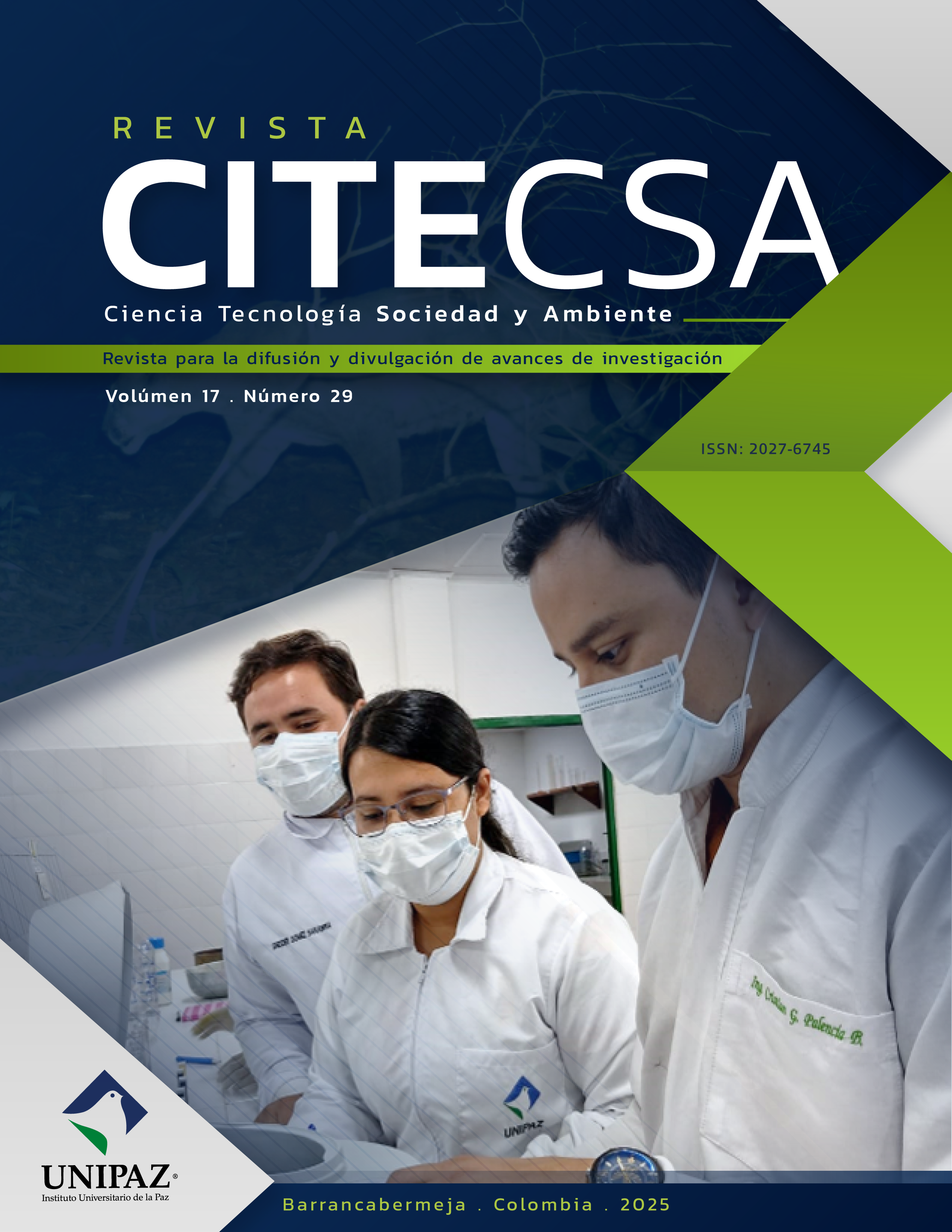Environmental Educational Project (PRAE) building together an environmental culture in the Educational Institution San Pedro Claver De Cascajal, Sabanalarga Municipality, Department Of Atlantic Colombia
Keywords:
PRAE, environmental culture, environmental education.Abstract
Sabanalarga is located in the center of the Atlántico department. It borders the municipality of Usiacurí to the north, the municipality of Baranoa to the northeast, the municipality of Repelón to the east, the municipality of Ponedera to the east, the municipality of Manatí and Candelaria to the south, the municipality of Luruaco to the west, and the Guájara reservoir. Its inhabitants are dedicated to agricultural, fishing, and other activities, surrounded by farms or country houses where products are extracted for sale. According to the population, the majority of its inhabitants with medium-high incomes prefer their children to move to the municipality of Sabanalarga to receive educational benefits, which have been recognized for the quality of the academic processes. One of the events with an impact on the district are those held both inside and outside the institution, especially those related to physical education and the natural sciences (immersed in the PRAE), since they involve the entire community. It should be noted that most of the town's residents work on nearby farms and in the surrounding areas of the institution. They often move their livestock through the streets, leaving excrement and unpleasant odors, and occasionally causing disturbances and incidents for the people, both adults and children, who frequently pass by. For all of the above reasons, the educational institution has been leading various activities through the PRAE project, aimed at improving these issues with proposals that contribute to a better quality of life, especially by allowing them to make proper use of what their environment and nature offer for their own well-being. The PRAE, "Building an Environmental Culture Together," defines its actions as aimed at strengthening progress made through development plans directed by municipal and departmental entities. These include proper solid waste disposal, reforestation, soil fertility, and environmental awareness.
References
Benites, Y. E., Padilla, L. K., & Revelo, H. A. (2023). Estrategias lúdico pedagógicas para disminuir la contaminación en el río Guiza en el centro educativo de Palpis. Ciencia Latina: Revista Científica Multidisciplinar, 7(4), 8069-8091. https://doi.org/10.37811/cl_rcm.v7i4.7550
Colombia.com. (n.d.). Sitios turísticos de Barranquilla. https://cdn.colombia.com/docs/turismo/sitios-turisticos/barranquilla/atlantico.pdf
Dimar. (n.d.). Mapas de riesgos. https://www.dimar.mil.co/sites/default/files/informes/4._Documento_tecnico_Mapas_de_Riesgos_Final.pdf
Manique Pinche, A. (2025). Nivel de conocimiento y valoración del concepto “biodiversidad de fauna amazónica” por estudiantes de cuarto y quinto de secundaria en la ciudad de Puerto Maldonado, Madre de Dios. [Tesis de maestría, Universidad no especificada].
Manotas, J. L. (2020). Plan de desarrollo municipal 2020 - 2023 Sabanalarga, ciudad estratégica. [Informe técnico].
Muñoz, J. A. G., Ortiz, D. A. G., Zarate, M. J. S., & Marciales, Á. M. (2019). La cartografía social (mapeo colectivo) en un mundo globalizado: Diagnóstico y reconocimiento del territorio y la problemática ambiental en el municipio de Cimitarra, Santander. CITECSA, 11(17), 22-22.
Muñoz, J. A. G., Ortiz, D. A. G., Zárate, M. J. S., & Marciales, A. M. (2020). Investigación formativa en el diseño de una modalidad ambiental con actitudes ecológicas en una granja experimental al sur de Santander, Colombia. Revista CITECSA, 12(20), 44.
Ortiz, D. A. G., Camargo, L. R., Navarro, D. A., & Ruiz, S. A. (2020). Proyecto educativo institucional-PEI, con enfoque en educación ambiental. CITECSA, 12(20), 24-34.
Ortiz, D. A. G., Castellar, A. A. D., Zarate, M. S., & Marciales, A. M. (2020). Responsabilidad social ambiental y educación globalizada. CITECSA, 12(20), 35-43.
Ortiz, D. A. G., Díaz, N. M. Z., & Castellar, A. A. D. (2019). Responsabilidad social y globalización. Revista Dialogus, (4), 44-55.
Ortiz, D. A. G., Doria, L. A. P., & Díaz, N. M. Z. (2019). Investigación interdisciplinaria y transdisciplinaria como tendencia emergente de lo sistémico complejo desde el pensamiento crítico. Revista Oratores, (11), 63-83.
Ortiz, D. A. G., Gamba, B. R. C., Herrán, E. L. P., & Acosta, D. A. R. (2020). Investigación formativa en ciencia para el desarrollo de competencias en educandos. CITECSA, 12(20), 14-23.
Ortiz, D. A. G., Ricaute, C. B., Chancy, C. A. C., & López, D. A. (2022). Elaboración de compostaje (enseñanza-aprendizaje) con estudiantes agropecuarios de la IE Integrado del Carare Cica en Cimitarra, Santander, Colombia. CITECSA, 14(23), 5-16.
Piarpuezan, V. R., Jamioy, N. H., & Cuaspud, H. A. R. (2023). Estrategias pedagógicas para fortalecer la cultura ambiental frente a la contaminación por residuos sólidos en los estudiantes de primaria de la sede indígena Awá, La Brava. Ciencia Latina: Revista Multidisciplinar, 7(5), 3129-3146. https://doi.org/10.37811/cl_rcm.v7i5.7944
Quiñones, M. (2008). Contaminación por quema de residuos sólidos. [Informe técnico].
Ramírez, D. E. M. (2025). Estrategias pedagógicas para fortalecer la cultura ambiental en relación con la contaminación por residuos sólidos en los estudiantes de grados 4° y 5° de primaria en la Escuela Rural Mixta de Angulo. Ciencia Latina: Revista Científica Multidisciplinar, 9(1), 639-658.
Rojas Velandia, L. (n.d.). Evaluación del modelo de compensación y seguimiento por tala de árboles en el Distrito Capital (Tesis doctoral, Universidad Nacional de Colombia).
Sandoval-Guerrero, L. K., Dávila-Sandoval, J. A., & Cárdenas-Rodríguez, J. S. (2025). Gestión ambiental en educación superior en correspondencia con las corrientes ambientalistas. ISTE SCIENTIST, 4(01).
Torres, M. (1996). Ministerio del Medio Ambiente. Reflexión y acción: El diálogo fundamental para la educación ambiental. [Informe técnico].
UNESCO. (2014). Aprender sobre biodiversidad aplicando múltiples perspectivas. [Informe].
Ulloa-Jiménez, M. J., González-Ortiz, D. A., Hernández-Gamboa, J. O., & Gonzalo-Zapico, M. (2025). La investigación formativa, un análisis comparativo entre instituciones de educación secundaria públicas y privadas: Formative research, a comparative analysis between public and private secondary education institutions. Multidisciplinary Latin American Journal (MLAJ), 3(1), 346-360.
Plan de desarrollo departamento del Atlántico 2020-2023. (n.d.). [Informe].
Downloads
Published
How to Cite
Issue
Section
License
Copyright (c) 2025 CITECSA

This work is licensed under a Creative Commons Attribution-NonCommercial-ShareAlike 3.0 Unported License.

Este obra está bajo una licencia de Creative Commons Reconocimiento-NoComercial-CompartirIgual 3.0 Unported.

